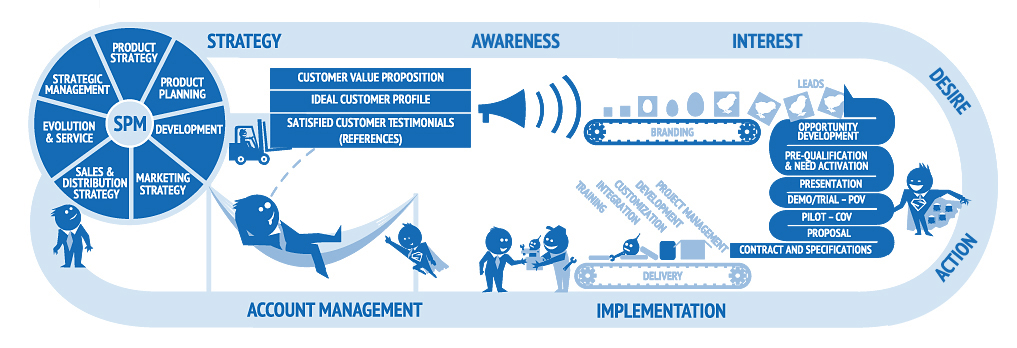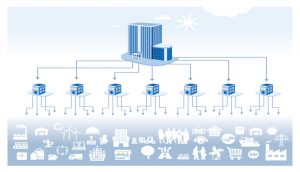Why your channel partners are not your customers
One of my readers recently asked me why I stress that our channel partners are not our customers. In this post I will explain why I make this distinction and why I believe it is crucial not to view channel partners as customers.
I use the Alexander Osterwalder business model framework to understand and describe a business.
In the business model framework we distinguish between our customers and the channel that we use to find, win, make, keep and grow those customers.
The direct channel approach
We talk about a direct channel approach when we employ (hire, pay and control) all the resources required to find, win, make, keep and grow happy customers. Our employees are obviously not our customers (although in some respect we should treat them as though they were).
The indirect channel approach
We talk about an indirect channel approach when we use independent third party companies to find, win, make, keep and grow happy customers on our behalf. These companies do business in their own name, at their own expense and at their own risk.
The revenue generation model
Any company must find a revenue generation model that is repeatable, replicable and scalable. Especially in the information technology industry, where the winners take all, is this an urgent and critical requirement.
 The revenue generation model includes all the processes, activities and documentation required to fill the funnel and lead the potential customer personas through their buyer’s journey until they decide to buy and use our products (and/or services).
The revenue generation model includes all the processes, activities and documentation required to fill the funnel and lead the potential customer personas through their buyer’s journey until they decide to buy and use our products (and/or services).
As we map the path to global market leadership we may decide that recruiting and managing channel partners to help us reach and hold this position is a better approach than hiring, paying and managing a huge workforce to do the job. Thus we are replacing some of our direct channel resources with independent channel partners and we are passing a big chunk of our gross margin to these partners in return. We outsource parts of the processes required for finding, winning, making, keeping and growing happy customers.
We expect that each channel partner will perform the same activities as we would have done in the direct format and we expect each channel partner to grow her customer base in a cost efficient way, yielding an attractive profit that enables them to reinvest in growing the business with our products.
The difference between customers and channel partners
Customers decide to buy our products because they find that the value of using our product justifies the price that they have to pay.
Sometimes our product is a direct and integrated part of the customer’s product and sometimes our product is a part of the customer’s internal setup. Understanding the customer’s business will help us understand how our products can make the customers more productive and provide an attractive RoI, but we cannot expect our customers to actively sell (find, win, make, keep and grow) our brand to their customers (over and above serving as references and providing testimonials).
We are delighted to sell to all potential customers in our target market segments.
Although we would be delighted to work strategically with our customers we are mostly kept at arms length. Our customers often have “second source” approaches to avoid us monopolizing our position and create a “lock-in” situation.
 Channel partners decide to work with us because they find that the profit from reselling our product justifies the margin that they can generate (which may include margin from other products and services too).
Channel partners decide to work with us because they find that the profit from reselling our product justifies the margin that they can generate (which may include margin from other products and services too).
We expect our channel partners to assume responsibility for certain processes and activities in our revenue generation model and we work actively with them to help them become proficient and profitable in their marketing, sales and support activities. We carefully manage our channel to avoid (too much) over-penetration and we work proactively to help our partners address vertical segments to help us cover the total potential market. We carefully define and police the requirements for becoming and remaining channel partners.
As we increase our market position channel partners are eager to work strategically with us, aligning our objectives, processes and activities. We share the same objectives of winning more customers, growing the value of the individual customer relationships and growing our market share.
Our channel partners are not our customers
I am sure you can see the fundamental differences between channel partners and customers.
Recruiting and managing channel partners is fundamentally different from building and managing the pipeline for winning and managing more customers. They engage with us for completely different reasons and the instruments we must use to motivate them to work with us are completely different, too.









